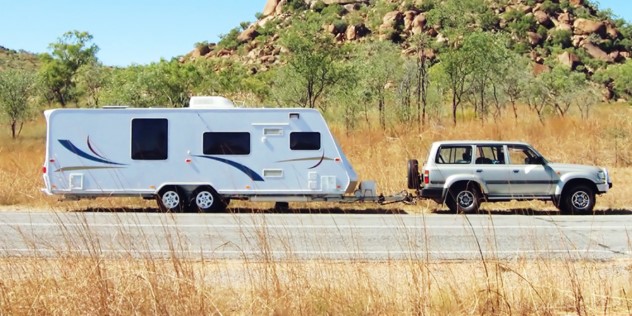A guide to towing: how to safely tow trailers and caravans
Learn how to secure your cargo, check for licence restrictions, and follow safety standards when towing a trailer or caravan.

If you're planning on hitting the road with a caravan, boat or trailer - this Motoring Advice guide to towing can get you in the know before you hitch up! Secure your load, check for licence restrictions and follow safety standards.
What to think about to tow a caravan or trailer safely
Understanding your vehicle's capacity
Temperature
- Always be aware of the car’s engine and transmission temperatures. Refer to your owner's manual to ensure they remain within safe operating limits.
- Outside weather temperatures can also affect tyre pressure so regularly check and adjust.
Weight
- Ensure even loading (weight distribution) across the vehicle and trailer. Be cautious about overloading and always weigh your vehicles to ensure you're within weight limits. Ideally, maintain at least 10 percent of your capacity free. Find a public weighbridge near you via the National Measurement Institute.
- Consider the base weight on your trailer and campers. Accessories added post-purchase can change the official weight.
- Check individual axle weights to prevent uneven loading, which can lead to axle failure.
Equipment and attachments
- Make sure you're using the right tow ball size and adjust the receiver hitch if necessary. Know the correct mount for the towing assembly and use stabilizers if needed.
- Always ensure the lead vehicle's tow settings are appropriate (e.g., turn off overdrive when towing).
- Make sure trailer and camper axles and bearings are frequently checked and lubricated.

Understanding load transfer
Understanding load transfer is essential when towing to ensure that neither the front nor the rear tyres are overloaded. Properly managing load transfer and checking your cargo movements helps ensure optimal traction, stability, and safety.
Basics
- Every vehicle has a center of gravity, which is the point where its weight is considered to be concentrated.
- When a vehicle is stationary on level ground, the weight (or load) is evenly distributed across all tyres, given the vehicle is symmetrically loaded.
Braking
- When you apply the brakes, the vehicle's weight moves towards the front. That's why the front of the car dips during hard braking.
- As a result, the front tyres take on more of the vehicle's weight, and the rear tyres take on less. This increases the braking capability of the front tyres and decreases that of the rear.
Acceleration
- Conversely, during acceleration, especially in rear-wheel-drive vehicles, weight transfers to the rear. This is why the rear of the car might squat during hard acceleration.
Cornering
- During cornering, weight transfers from the inside wheels to the outside wheels. For example, if a car is making a left turn, weight will transfer to the right-side tyres.
Towing and load impact
- When towing or carrying a heavy load, the vehicle's centre of gravity changes. If a heavy trailer is attached, the rear of the towing vehicle might sag, transferring more load onto the rear tyres and possibly the trailer tyres, depending on the hitch design.
Read more: The physics behind caravan sway
Safety and legal considerations
- Be aware of towing attitudes. When towing, remember you're not a speed racer. Adjust your driving style to be more cautious and slower.
- When towing, maintain a minimum 60-meter distance behind another towing vehicle or heavy vehicle.
- Vehicles exceeding 12.5 meters in length or 2.8 meters in height are classified as Class B on most NSW toll roads.
- You must not have any person travelling in a trailer or caravan you’re towing.
Speed
- In Australia, the maximum towing speed for a GCM (Gross Combination Mass,) over 4.5 tonnes is 100kph.
- Ensure you're aware of any specific vehicle restrictions. For example, most Subarus have a towing speed limit of 80kph.
Gas bottles and fuel
- Tanks must be secured externally in standard-approved containers.
- There's a 250-litre limit for fuel carried in containers when towing, and it should be in approved Jerry cans.
- The maximum amount of LPG that can be carried is either 50 litres in an approved LPG cylinder or 2x 9kg gas bottles.
L and P plates
- Learner drivers and learner and provisional motorcycle riders are not allowed to tow.
- P1 car licence holders can tow small trailers with up to 250kg of unloaded weight.


